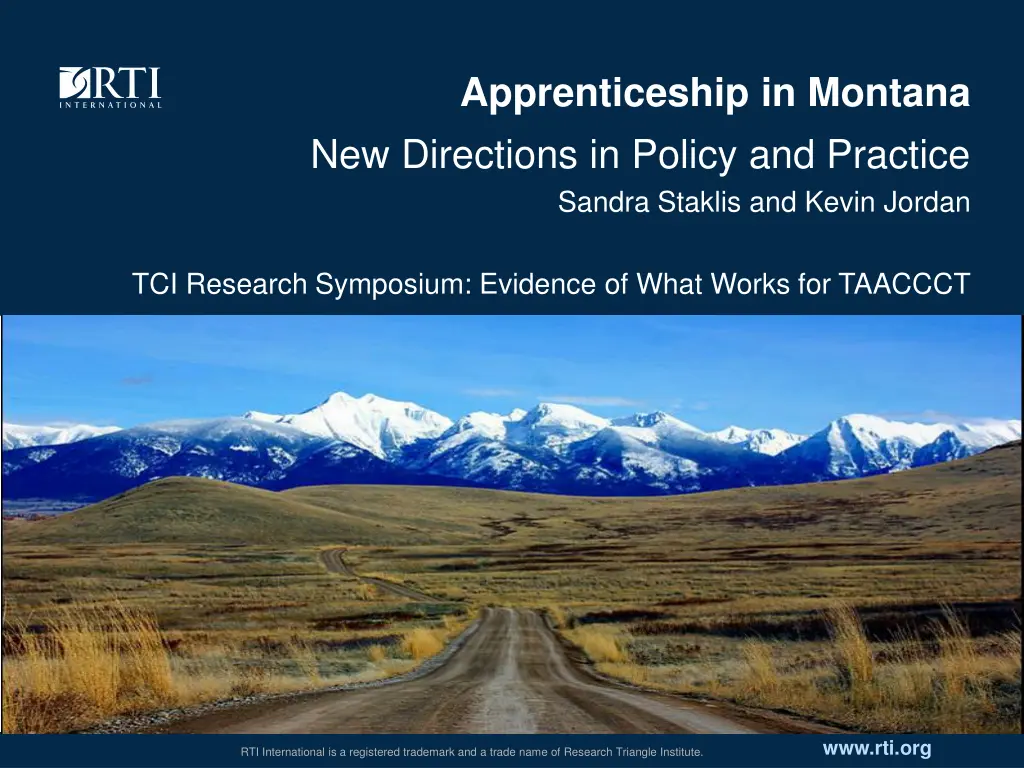
New Directions in Apprenticeship Programs
Explore the evolving landscape of apprenticeship programs in the US, from traditional approaches to newer trends like competency-based models. Discover the benefits, requirements, challenges, and suggestions from the field for a comprehensive understanding of this valuable training method.
Download Presentation

Please find below an Image/Link to download the presentation.
The content on the website is provided AS IS for your information and personal use only. It may not be sold, licensed, or shared on other websites without obtaining consent from the author. If you encounter any issues during the download, it is possible that the publisher has removed the file from their server.
You are allowed to download the files provided on this website for personal or commercial use, subject to the condition that they are used lawfully. All files are the property of their respective owners.
The content on the website is provided AS IS for your information and personal use only. It may not be sold, licensed, or shared on other websites without obtaining consent from the author.
E N D
Presentation Transcript
Apprenticeship in Montana New Directions in Policy and Practice Sandra Staklis and Kevin Jordan TCI Research Symposium: Evidence of What Works for TAACCCT www.rti.org RTI International is a registered trademark and a trade name of Research Triangle Institute.
RevUp Montana 13 two-year colleges throughout Montana Manufacturing and energy Stackable certificates and industry-recognized credentials Online course offerings Apprenticeship (with Montana HealthCARE) Developmental math Coaching
Apprenticeship: One day in the media Apprenticeships offer debt-free training San Francisco Chronicle Oregon a national leader in recruiting women apprentices but challenges remain The Oregonian Apprenticeship first step on ladder to middle class How Apprenticeship Will Save the U.S. Economy Wichita Eagle Forbes
National Context Traditional Apprenticeship Oversight provided by the Department of Labor or state agencies Majority of apprentices in construction trades and manufacturing Time based Newer Trends American Apprenticeship Grants Registered Apprenticeship College Consortium New fields: healthcare and information technology Competency-based models
Requirements of Registered Apprenticeship Employer involvement Structured on the job training Related technical instruction Paid work experience with incremental wage increases Alignment with industry-recognized credential
Benefits Earn while you learn Low cost to the public Higher earnings Workforce development
Issues Underutilized Public perception Portability Decreasing union numbers Weak or neglected instruction Attrition
Suggestions from the Field Recruitment Marketing Tax credits and subsidies Financial aid Increase diversity Community college involvement
Apprenticeship in Montana Registration by state agency 949 active registered apprenticeships in 2014 Construction fields dominate 50/50 union/non-union
Case Study Research Questions What needs do stakeholders feel that apprenticeship can meet, and why is it regarded as the best approach for filling those needs? In what ways do existing apprenticeship opportunities need to change to meet those needs? What strategies have been tried, and how successful have the efforts to introduce new opportunities been?
Data Collection Interviews State agency representatives College administrators Employers Other stakeholders (unions, economic development organizations) Site visits Employer and student survey
Need for Apprenticeship Workforce development Skill gap, lacked of skilled workers Young people leaving Montana Ease faculty shortages Access to new funding sources for education Control college costs
Need for Change in Apprenticeship Improved instruction and outcomes Higher rates of college completion Workforce flexibility
RevUp: Existing Apprenticeships RevUp grads: Streamlined application process with reduced on- the-job training and instructional requirements Apprenticeship certificate holders: Award credit toward degrees
RevUp: New Apprenticeships Accelerated program that offers: Competency-based instruction Integrated college coursework and on- the-job training Tuition covered by employer and/or financial aid Offers an AAS and apprenticeship certificate
Apprenticeship in RevUp: Approach Expand agreements between existing apprenticeship programs and college Establish new programs Outreach through workforce navigators Recruit employers to work with state apprenticeship office Develop a template/set of guidelines Replicate initial models
Challenges Misconceptions: employers and colleges Accreditation requirements Employer interest/commitment Need to adapt college programs
RevUp and Montana HealthCARE Establishing model programs State-level liaison between the Department of Industry and Labor and the colleges Three regional specialists dedicated to developing apprenticeships in healthcare Outreach and marketing campaign
Case Study: New Questions In what ways might apprenticeship efforts need to be scaled to a small state with many small manufacturers? How does apprenticeship connect to other education and workforce initiatives? What about women and tribal colleges?
